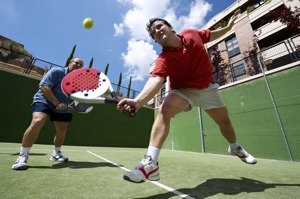

Understanding the Costs of Padel Tennis Court Construction
Padel tennis, a sport that has been rapidly gaining popularity, particularly in Europe and Latin America, requires specifically designed courts that cater to its unique gameplay. If you're considering investing in a padel tennis court, understanding the costs involved in its construction is essential. The costs can vary widely based on various factors, including the choice of manufacturer, location, material quality, and additional features.
Factors Influencing Padel Tennis Court Costs
1. Manufacturer Selection The choice of manufacturer plays a crucial role in the overall cost of your padel tennis court. Established manufacturers with a good reputation may charge higher prices, but they often guarantee better quality materials and craftsmanship. On the other hand, lesser-known manufacturers might offer lower prices but may compromise on quality or customer service. It’s essential to balance cost with quality by researching potential manufacturers, reading customer reviews, and asking for references.
2. Court Material The materials used in constructing the court significantly impact the cost. Padel courts typically consist of metal frames, glass walls, artificial turf, and a suitable lighting system. High-quality materials like tempered glass for walls or specialized turf for the playing surface can increase your budget. While it may be tempting to opt for cheaper materials, investing in quality ensures durability and a better playing experience.
3. Size and Design The standard size of a padel court is 20m by 10m, but custom designs can alter this dimension, affecting the cost. If you are looking to build a court with additional features such as bleachers, landscaping, or water drainage systems, plan accordingly. These elements can escalate costs dramatically, but they also enhance the functionality and aesthetics of your facility.
4. Ground Preparation The condition of the land where the court will be built also contributes to the overall costs. If the site is not level or requires significant groundwork, including excavation or grading, expenses can rise. Investing in proper groundwork can prevent potential issues related to water drainage and court stability.
5. Installation Costs Labor costs for installing the court can vary significantly based on geographic location and the specific contractor you choose. Installation should ideally be carried out by professionals with experience in constructing padel courts, as improper installation can lead to problems in the future. Always ask for detailed quotes from different contractors to find competitive rates.

6. Ongoing Maintenance While initial construction costs are critical, ongoing maintenance should also be budgeted. Artificial turf may require periodic cleaning and replacement, while glass walls can need occasional repairs. Proper maintenance ensures longevity, which translates to better value for money over time.
Average Cost Estimates
The cost of constructing a padel tennis court can range anywhere from $30,000 to over $70,000, depending on the factors discussed. A basic court built with quality materials may be towards the lower end of that scale, while custom designs, premium materials, and additional features push costs upwards.
Financing and Return on Investment
If funding a padel court seems daunting, consider various financing options available, from loans to partnerships. Additionally, consider the potential return on investment (ROI). Padel is growing in popularity; establishing a court can generate revenue through memberships, tournaments, and lessons. Carefully analyzing both the costs and potential earnings can help make the investment more appealing.
Conclusion
Investing in a padel tennis court involves careful consideration of various factors that affect the overall costs. By selecting the right manufacturer, using quality materials, planning for additional features, and ensuring proper installation and maintenance, you can create a court that meets both your needs and your budget. As padel continues to gain traction worldwide, building a court could be a wise investment that not only fosters community engagement in sports but also potentially provides significant financial returns. Take the time to research and prepare, and soon enough, you’ll contribute to the rising wave of enthusiasm for this exciting sport.
High-Performance Industrial Flooring Solutions China Paddle Tennis Court for Sale
High-Performance Industrial Flooring Solutions Durable & Cost-Effective
Homogeneous Transparent Floor – Durable & Stylish Rubber Floor Solutions
Premium Homogeneous Transparent Floor for Durable & Stylish Spaces Rubber Floor Solutions
Premium Sports Floor Solutions Durable PVC Sports Floor & Rubber Floor for Gyms
Durable Rubber Composite Floor Premium Rubber Floor & Mats Solutions